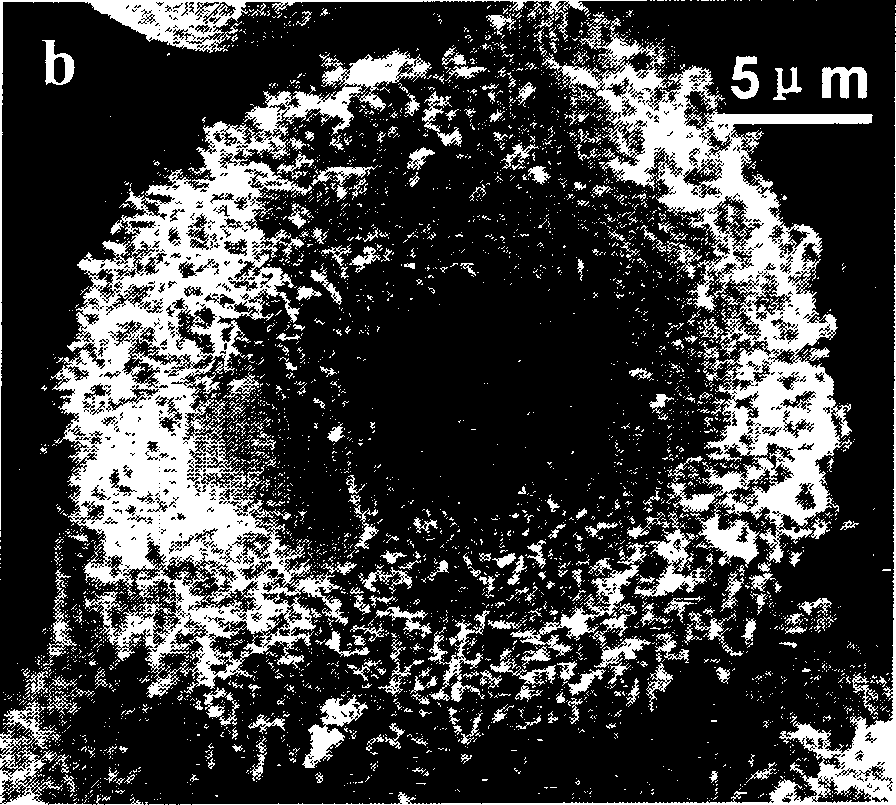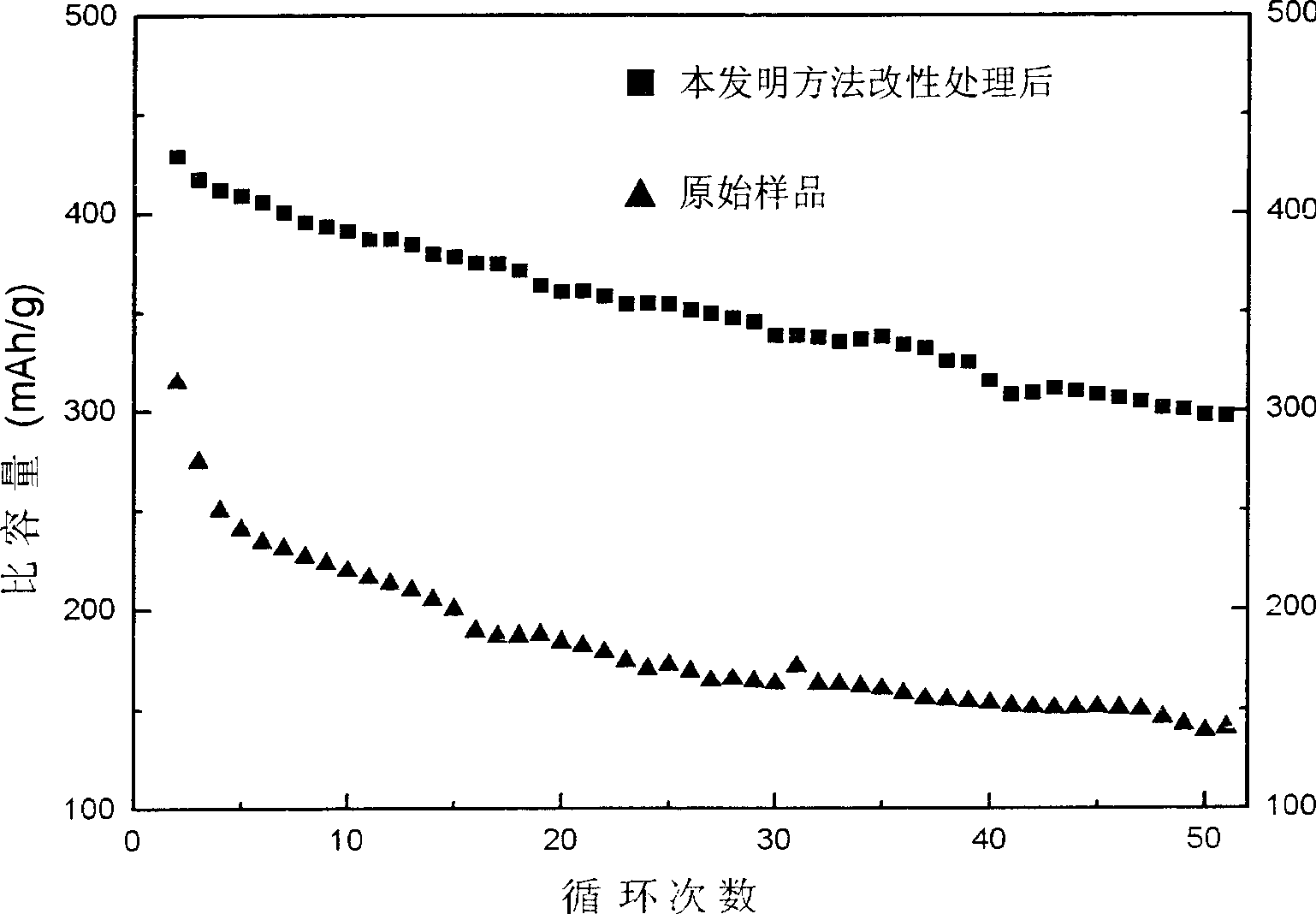Modified method for lithium ion cell negative electrode material
A technology for lithium ion batteries and negative electrode materials, which is applied in battery electrodes, electrode manufacturing, secondary batteries, etc., can solve problems such as inability to adapt to high-current power batteries, materials cannot be used at the same time, cyclability and capacity defects, etc. Volume expansion and pulverization effect, good battery kinetics, large aspect ratio effect
- Summary
- Abstract
- Description
- Claims
- Application Information
AI Technical Summary
Problems solved by technology
Method used
Image
Examples
Embodiment 1
[0025] Use natural graphite balls (quality 2g) with an average diameter of 20 μm ( Figure 1a ), add Fe powder as catalyst (quality 0.046g), mix evenly, use C 2 h 4 Mix the carbon source and Ar in a ratio of 1:1 by volume, pass it into a reaction furnace at a temperature of 1000 ° C, and after 100 minutes of reaction, a modified composite with in-situ growth of nano-carbon fibers / carbon tubes on the surface is obtained. Negative material ( Figure 1b ). It is used as the negative electrode material of lithium ion battery. The detection results of the conventional lithium-ion battery negative electrode evaluation method show that under the same number of cycles, the capacity and cycle performance have been greatly improved ( figure 2 ).
Embodiment 2
[0029] Choose natural graphite balls (mass 2g) with an average diameter of 20 μm, add Fe(NO 3 ) 3 As a catalyst (mass 0.198g), natural graphite balls can be added to Fe(NO 3 ) 3 After mixing evenly in the solution, dry it with CH 4 as carbon source and N 2 Mix according to the volume ratio of 2:1, pass into a reaction furnace at 700° C., and react for 60 minutes to obtain a modified composite negative electrode material with in-situ growth of nanometer carbon fibers / carbon tubes on the surface. It is used as the negative electrode material of lithium ion battery. The detection results of the conventional lithium-ion battery negative electrode evaluation method show that the capacity and cycle performance have been greatly improved under the same number of cycles.
Embodiment 3
[0031] Choose natural graphite balls (mass 2g) with an average diameter of 20 μm, add Fe(NO 3 ) 3 As a catalyst (mass 0.084g), natural graphite balls can be added to Fe(NO 3 ) 3 After mixing evenly in the solution, dry it with CH 4 as carbon source and N 2 Mix according to the volume ratio of 9:1, pass into a reaction furnace at 700°C, and react for 240 minutes to obtain a modified composite negative electrode material with in-situ growth of nano-carbon fibers / carbon tubes on the surface. It is used as the negative electrode material of lithium ion battery. The detection results of the conventional lithium-ion battery negative electrode evaluation method show that the capacity and cycle performance have been greatly improved under the same number of cycles.
PUM
 Login to View More
Login to View More Abstract
Description
Claims
Application Information
 Login to View More
Login to View More - R&D
- Intellectual Property
- Life Sciences
- Materials
- Tech Scout
- Unparalleled Data Quality
- Higher Quality Content
- 60% Fewer Hallucinations
Browse by: Latest US Patents, China's latest patents, Technical Efficacy Thesaurus, Application Domain, Technology Topic, Popular Technical Reports.
© 2025 PatSnap. All rights reserved.Legal|Privacy policy|Modern Slavery Act Transparency Statement|Sitemap|About US| Contact US: help@patsnap.com



